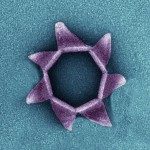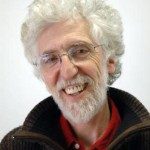Lien vers Pubmed [PMID] – 24075868
J. Mol. Biol. 2013 Nov;425(23):4714-26
The replicon model has initiated a major research line in molecular biology: the study of DNA replication mechanisms. Until now, the majority of studies have focused on a limited set of model organisms, mainly from Bacteria or Opisthokont eukaryotes (human, yeasts) and a few viral systems. However, molecular evolutionists have shown that the living world is more complex and diverse than believed when the operon model was proposed. Comparison of DNA replication proteins in the three domains, Archaea, Bacteria, and Eukarya, have surprisingly revealed the existence of two distinct sets of non-homologous cellular DNA replication proteins, one in Bacteria and the other in Archaea and Eukarya, suggesting that the last universal common ancestor possibly still had an RNA genome. A major puzzle is the presence in eukaryotes of the unfaithful DNA polymerase alpha (Pol α) to prime Okazaki fragments. Interestingly, Pol α is specifically involved in telomere biosynthesis, and its absence in Archaea correlates with the absence of telomeres. The recent discovery of telomere-like GC quartets in eukaryotic replication origins suggests a link between Pol α and the overall organization of the eukaryotic chromosome. As previously proposed by Takemura, Pol α might have originated from a mobile element of viral origin that played a critical role in the emergence of the complex eukaryotic genomes. Notably, most large DNA viruses encode DNA replication proteins very divergent from their cellular counterparts. The diversity of viral replication machineries compared to cellular ones suggests that DNA and DNA replication mechanisms first originated and diversified in the ancient virosphere, possibly explaining why they are so many different types of replication machinerie.

